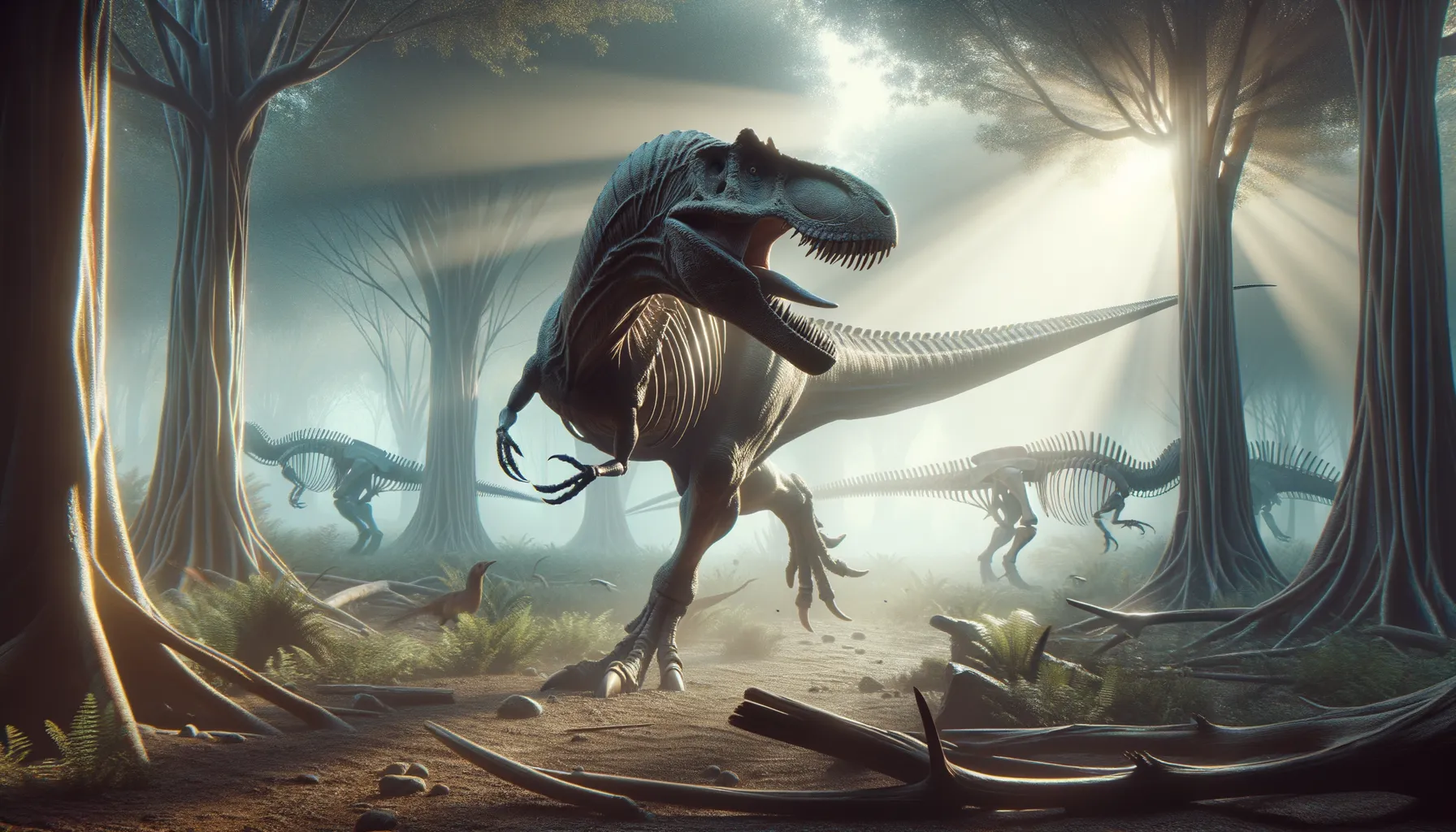
Tratayenia
A fierce predator that soared with agility.
Period
Cretaceous
Length
Roughly 8 meters long.
Height
Around 3 meters tall.
Weight
Approximately 1 ton.
Tratayenia was a formidable predator from the late Cretaceous period, known for its imposing size and distinctive skeletal structure. Discovered in Argentina, it is recognized as a megaraptorid theropod. This dinosaur exemplifies the link between ancient carnivores and the origin of modern birds. With its agile build and sharp claws, Tratayenia pursued prey with determination, making it a notable predator of its time.
Diet
Tratayenia was a carnivore with a preference for meat. It likely preyed on smaller dinosaurs and other animals available in its environment. Its powerful jaws and sharp teeth were well-equipped for its meat-eating lifestyle.
Hunting
With its considerable size and agility, Tratayenia hunted by ambushing or chasing down its prey. Its strong legs and advanced musculature enabled quick bursts of speed, making it an effective hunter in its ecosystem. Tratayenia relied on stealth and timing to capture its meals.
Environmental challenges
Tratayenia faced various environmental challenges, from climatic fluctuations to competition for resources with other large predators. As a ground-dwelling dinosaur, it contended with changes in vegetation and prey availability, impacting its hunting and survival strategies. Additionally, natural disasters like volcanic eruptions could have altered habitats, posing further challenges.
Speed
Moderate, agile movements.
Lifespan
Estimated around 20 years.
First discovery
Uncovered in Patagonia, Argentina in 2007.
Fun Facts
- Tratayenia was a type of dinosaur known as a theropod, similar to famous dinosaurs like Tyrannosaurus rex and Velociraptor.
- This dinosaur lived during the Late Cretaceous period, which was around 85 million years ago.
- Fossils of Tratayenia have been discovered in modern-day Argentina, giving scientists clues about prehistoric life in South America.
- Tratayenia was a predator, meaning it likely hunted for its food, using its sharp teeth and claws to catch prey.
- This dinosaur was named after the location where it was discovered, Tratayén, which is in the Neuquén Province of Argentina.
- The full name of Tratayenia is Tratayenia rosalesi, honoring the researcher Santiago Rosales for his contributions to paleontology.
- Tratayenia is part of a group called megaraptorans, which were known for their large size and powerful build.
Growth and Development
Tratayenia, like other theropods, underwent significant growth phases, developing its distinctive physical features over time. Juveniles were likely more agile and reliant on speed for hunting and evasion. As it matured, its size provided more strength, enabling it to tackle larger prey and dominate more effectively within its niche.
Habitat
Tratayenia inhabited open woodlands and semi-arid environments, where it could exploit both dense forests and open plains. These landscapes provided a diverse range of prey and opportunities for hunting tactics. The environment also offered varied shelters and nesting sites, crucial for reproduction and safety.
Interaction with other species
As a top predator, Tratayenia interacted with various prey species and other carnivores. While it dominated smaller dinosaurs, it also had to compete with other large theropods for food. These interactions helped shape its behavioral adaptations and strategies for survival.
Natural lifespan
In optimal conditions, Tratayenia could live up to 20 years.
Reproduction
Tratayenia likely reproduced by laying eggs in nests constructed in secluded areas to protect from predators. Parental involvement is speculative, but like many theropods, some care might have been provided to the young to increase survival rates. Reproductive cycles were likely influenced by environmental conditions.
Social behaviour
Although top predators often operate solo, Tratayenia might have displayed some social behavior, such as temporary alliances during hunting or shared nesting grounds. Territorial displays could have been part of its social dynamics, helping establish dominance over regions rich in prey.
Fossil locations
The primary fossils of Tratayenia were found in the Neuquén Province of Patagonia, Argentina. These fossilized remains offer significant insights into its anatomy and ecological role. The well-preserved evidence has been instrumental in understanding the diversity and distribution of megaraptorids in South America.
